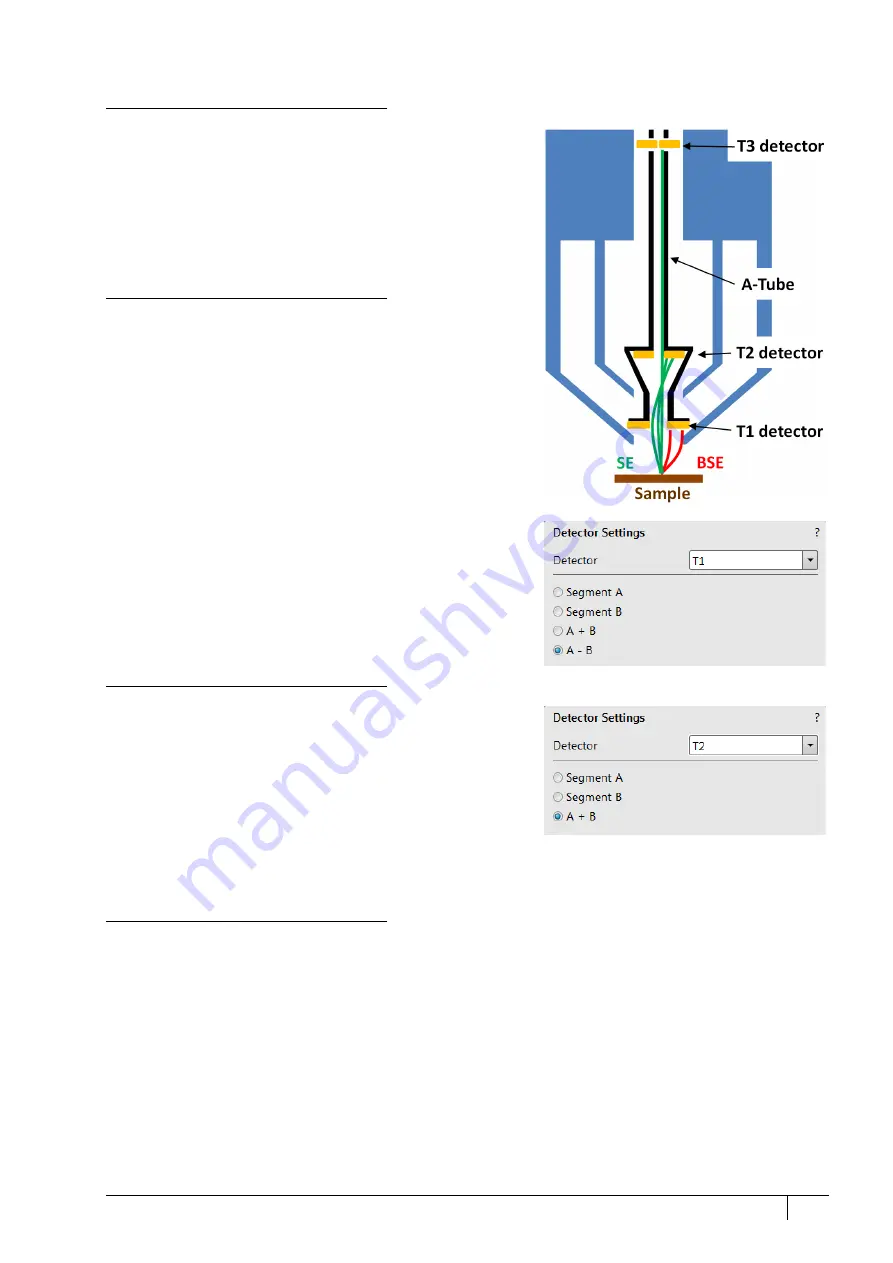
Operating Procedures: Standard Detectors
5-19
C O N F I D E N T I A L
– limited rights
User Manual
Revision A
Feb 2018
Trinity Detectors T1 / T2
Electrons generated by a primary beam can be collected by the
in-lens Trinity detectors T1 and T2, which are located inside the
final lens.
Note
Whenever the T1 or T2 is selected, the optical display is paused (the
CCD camera infra-red LED’s are switched off to keep emitted photons
from supersaturating the detector).
T1
The T1 detector is primarily designed to collect backscattered
electrons. It provides composite sample contrast. In the OptiPlan
and Immersion column Use cases, it detects backscattered
electrons throughout the whole range of accelerating voltages
thanks to the A-Tube at high potential that accelerates the BSE
towards the detector. In the Standard column Use case, the T1
provides strong BSE contrast at accelerating voltages of 5 kV and
higher.
The Compound Lens Filter is optimized for this detector
especially.
The functional detector area is split into two halves, and the
detector can be operated in four modes. Apart from the
composite mode
A + B
, the detector can be operated in the
topographical mode
A - B
, where a pseudo-topographical imaging
with suppressed atomic number contrast and maximum
topographical contrast is obtained. Signals from each half can be
also collected separately in modes
Segment A
/
Segment B
.
T2
The T2 detector is primarily designed to collect secondary
electrons and provides information of the sample topography in
the OptiPlan and Immersion column Use cases. Thanks to the
high potential of the A-Tube, the SE are accelerated and
collimated to the T2 detector. It can be operated with the
grounded A-tube as well - Standard column Use case. In this
case, backscattered electrons are collected, but the accelerating
voltage must be at least 5 kV. The intensity of the signal in the
Standard column Use case is dependent on the beam current and
working distance – the higher the beam current and the shorter the WD, the higher the T2 signal.
T3 (option)
Electrons generated by a primary beam can be collected by the in-column Trinity detector T3, which is located
inside the column just below the aperture strip (see Chapter 7).
















































